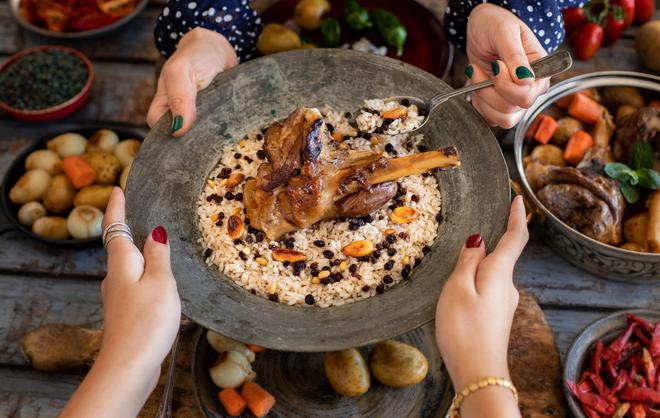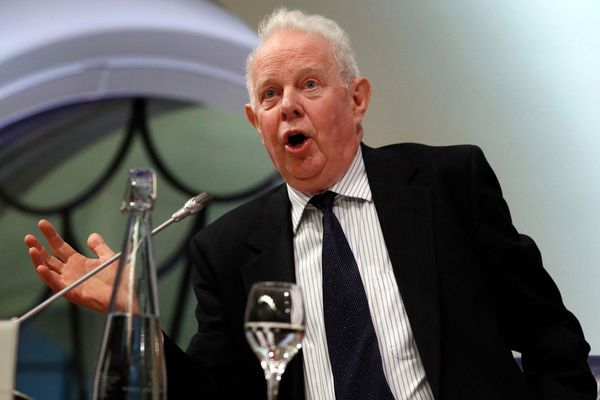Dubai to me has always been something akin to a sprawling food court on steroids. The image perfectly mirrors the city’s one-of-a-kind, immigrant-saturated resident base, of which it is believed roughly 85% are non-United Arab Emirates citizens.
What it lacks in terms of an indigenous and historically codified local Emirati cuisine, it more than makes up for by being a great receptacle for some of the world’s most popular cuisines. And even a few not so well-known ones (for me, at least!) like Belarusian and Sudanese, as I discovered on a recent trip.
ALSO READ: MasterChef’s Sashi Cheliah gears up to launch Pandan Club in Chennai
One of the best places where I notice both the omnipresence and omnipotence of this diversity is at the Time Out Market Dubai. Nestled in the Burj Khalifa-facing Souk Al Bahar mall, the hipster-chic, predominantly black space is a warren of kiosks and stalls selling everything from Portuguese specialities like the cod fish bacalhau and pasteis de nata egg custard tarts to Vietnamese bánh mi sandwiches. Delicacies brought to the fore by immigrants hungry for a taste of the home countries they’ve left behind for the golden pastures of Dubai. Forming perhaps the second largest immigrant workforce in Dubai are people from the Philippines. From the peanut butter-rich beef stew called kare kare to the multi-vegetable stir fry of pinakbet, I love the food with an unbridled passion.
After literally accosting unsuspecting Filipinos for Pinoy (Filipino cuisine) restaurant recommendations, I find myself in Al Rigga. This neighbourhood in the Dubai suburb of Deira is often referred to as ‘Little Manila’ thanks to its many Pinoy restaurants and Filipino inhabitants. This is also the place from where the now-famous Feby Dela Peña, a Filipina mother of three, started her project Ayuda, which means “help” in the Tagalog language. Using her cooking skills, she kept hundreds of families of all nationalities fed for free through the pandemic necessitated lockdowns in 2020.
Indian-Emirati fusion

On a saunter through the Meena Bazaar area in the Bur Dubai neighbourhood of Old Dubai, that’s also the nerve centre of all things Indian, I am introduced to localised Indian-Emirati dishes. Toned-down stews called salonas and less-punchy chicken and seafood biriyanis known as machboos cooked in the Emirati’s favoured ghee dot the menus of the various restaurants I see. These places blend the food of the subcontinent with local Arabic spices like sumac and za’atar for a unique taste twist.
ALSO READ: India ordered 115 biryanis per minute on Swiggy in 2021
Still in Bur Dubai, braving the intense afternoon heat and an excruciatingly loquacious proprietor, I stop for a quick lunch at the social media famous Al Ustad Iranian restaurant along the bustling Al Musalla Road. I’m informed that since 1978, this restaurant has been doing its bit to feed homesick Iranian immigrants, and now, tourists, with dishes like the iconic chicken joujeh kabab, cholo gousht and the divine yellow rice dotted with zeresh (dried barberries) and topped with a pat of butter.
The walls and ceiling of the restaurant are festooned with keepsakes and memorabilia such as baseball caps, Polaroids and ‘ancient’ mobile phones left behind by customers over the years. But, it is what lies beneath the glass-topped tables that closes the circle for me. Laminated between the glass and wood are currency notes of every conceivable denomination from almost every country on Earth (even a Zimbabwean $100 trillion note).
Thus, perfectly augmenting Dubai’s immigrant bond, always with food at its core.
The Mumbai-based writer and restaurant reviewer is passionate about food, travel and luxury, not necessarily in that order.







